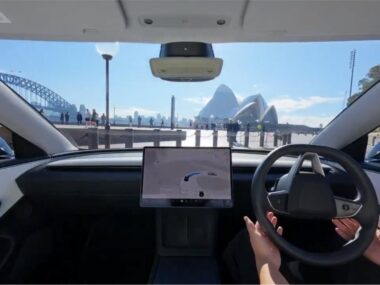For years, Tesla's Full Self-Driving capability has represented the bleeding edge of automotive technology—a promise of autonomous mobility that captivated early adopters. Yet a growing cohort of these pioneering customers now finds itself in a perplexing position, having invested thousands in a feature that remains largely undelivered. Their frustration is compounded by the stark financial reality that their investment in FSD has dramatically underperformed compared to Tesla's soaring stock value.
Key Highlights
- Extended Waiting Period: Early FSD purchasers have waited multiple years without substantial feature updates or communication timelines.
- Financial Opportunity Cost: Funds allocated to FSD packages would have yielded exponentially higher returns if invested in Tesla stock.
- Communication Void: Tesla has provided minimal updates or acknowledgment regarding deployment schedules for legacy vehicle owners.
- Hardware Limitations: Older Tesla models may require costly hardware retrofits to support future FSD capabilities, adding to owner expenses.
The Broken Promise of Full Self-Driving
Tesla’s Full Self-Driving package, often marketed as an imminent revolution, has been available for purchase since 2016. Priced between $8,000 and $15,000 over the years, it promised a future where drivers could relinquish control entirely. However, for owners of models produced before 2021—particularly those with Hardware 2.0 or 2.5—the reality has been a long silence punctuated by vague assurances.
The Hardware Hurdle
One of the most significant barriers to FSD delivery for older vehicles is hardware compatibility. Tesla’s rapid iteration of Autopilot hardware means that cars built just a few years apart have vastly different capabilities. While the company has offered upgrades for some vehicles—such as the Hardware 3.0 computer retrofit—this often comes at an additional cost and still doesn’t guarantee full functionality. Many early supporters feel they are being left behind as Tesla focuses on newer models equipped with more advanced sensors and processors.
The Financial What-If: FSD vs. TSLA Stock
Perhaps the most bitter pill to swallow for loyal customers is the financial hindsight. An owner who spent $10,000 on FSD in 2019 might today reflect on what that money could have become if invested in Tesla shares.
| Investment Type | Amount Invested in 2019 | Approximate Value in 2024 | Return on Investment |
|---|---|---|---|
| FSD Package | $10,000 | Unrealized (feature still limited) | 0% functional return |
| Tesla Stock (TSLA) | $10,000 | ~$80,000 (varies with market) | ~700% |
This comparison isn’t merely speculative—it highlights a tangible opportunity cost. For many, the choice to invest in FSD was a vote of confidence in Tesla’s vision. Now, that decision carries a tinge of regret as the company’s market success overshadows its product delivery delays.
The Silence from Tesla
Compounding the issue is Tesla’s notorious lack of communication. Unlike traditional automakers, which often provide detailed roadmap updates, Tesla has operated with minimal transparency regarding FSD rollout plans for older vehicles. Forum threads and social media are filled with comments from owners who feel ignored, with many resorting to speculation and shared frustration in lieu of official updates.
Looking Ahead: What’s Next for Early Adopters?
While Tesla continues to refine FSD for newer models—often highlighting incremental software updates—the path forward for legacy vehicles remains murky. The company faces a delicate balancing act between innovation and obligation. On one hand, it must push the boundaries of technology to stay competitive; on the other, it has an ethical—and perhaps legal—responsibility to deliver on its promises to early supporters.
Some industry analysts suggest that Tesla may eventually offer more generous upgrade paths or even compensation, but such gestures remain speculative. For now, owners of older Teslas are left weighing their options: continue waiting, seek a hardware upgrade, or cut their losses and move to a newer model.
Conclusion: Tesla’s Full Self-Driving technology remains one of the most ambitious projects in the automotive industry, but its execution has left a segment of the company's most loyal customers in a difficult position. Stranded between undelivered promises and the stark financial insight of what might have been, these early adopters underscore the risks inherent in betting on frontier technology. As Tesla forges ahead, the hope among many is that the company will not forget the drivers who helped fund its journey—and who are still waiting for their cars to truly drive themselves.


